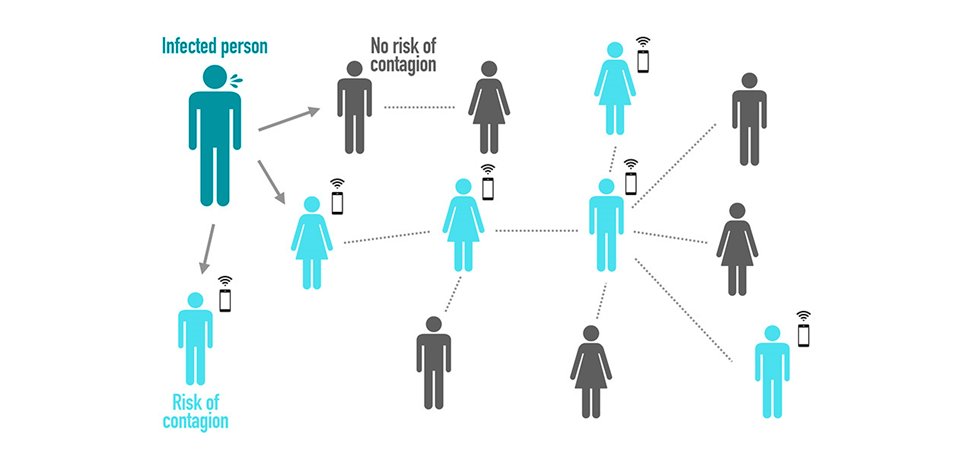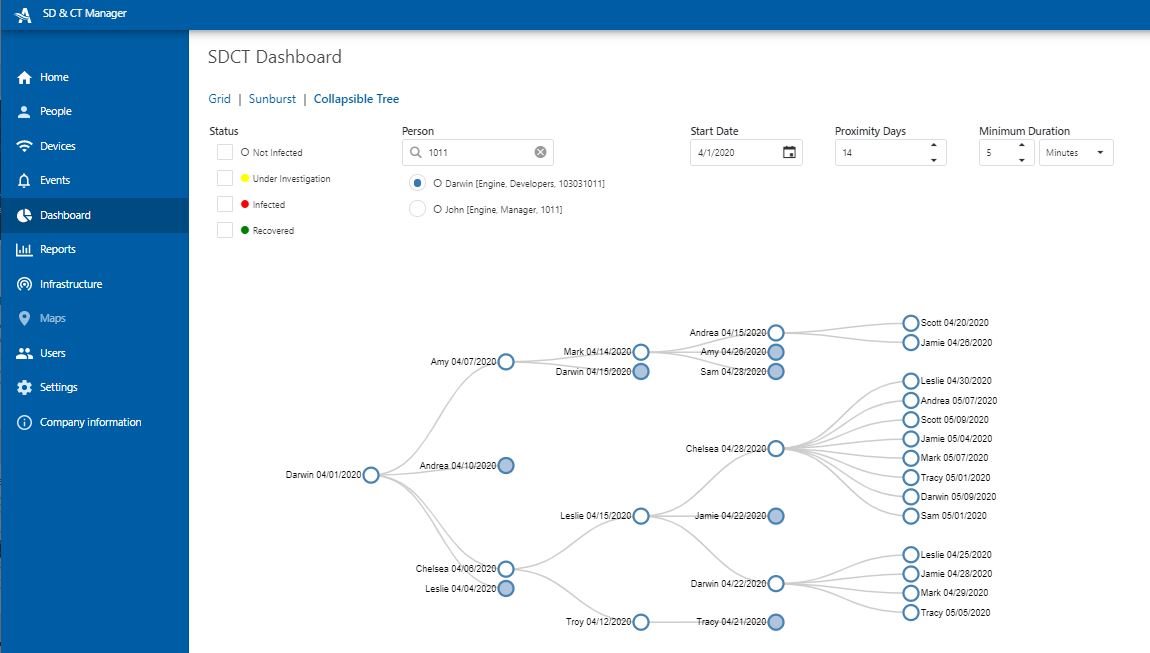SSZT256 september 2020 CC2640R2F , CC2640R2L

With its low-cost and low-power features, Bluetooth® Low Energy technology has become the foundation for a wide range of applications. One example is using Bluetooth beacons to create a real-time location system, which is a positioning system that can monitor the whereabouts of equipment or people.
So what role does Bluetooth play in this type of application? Asset tracking uses Bluetooth tags that communicate with one another autonomously to both transmit and receive data in order to effectively monitor the proximity of things or people. Why would you want to monitor the proximity of one person to another? These days, when it comes to easily transmitted illnesses, it’s important to take action to safely interact with one another. Whether it’s a personal situation such as going to the gym or grocery store or a business operating with many workers, the practice of proper social distancing applies to everyone.
Using Bluetooth technology for contact tracing and social distancing is a way to effectively monitor and slow the spread of easily transmitted illnesses to encourage safe practices. But how does it work? Let’s take an example scenario of a workplace. Each employee receives a wearable bracelet or tag. The tags can communicate with one another autonomously and alert employees when they are within a given proximity to another tag, thus ensuring proper social distancing. The tag can also collect data when interactions occur such that if an employee tests positive for a given illness, the data can help determine who else may have been exposed. Using proximity detection rather than location detection protects the wearer’s privacy by not using actual GPS location data.
Figure 1 below shows an example of a contact tracing report and how it can slow the spread of illnesses by identifying who has been in contact with an infected person and is at risk of further spreading the illness. This allows proper measures to be taken thus reducing spread.
 Figure 1 Example contact tracing report
(source: AiRISTA Flow)
Figure 1 Example contact tracing report
(source: AiRISTA Flow)SimpleLink™ Bluetooth devices, such as the CC26xx family of devices, can help address the design challenges of developing a Bluetooth asset tracking solution. For example:
- Their small sizes – as low as 2.7 mm by 2.7 mm in the CC2640R2F wafer chip-scale package – make it possible to design into applications such as a wearable tags, wristbands and key fobs.
- The ultra-low-power SimpleLink sensor controller and standby currents as low as 0.94 µA in our portfolio help maximize battery life, which is crucial for coin-cell battery applications.
- Low cost options beginning at $0.85 with CC2640R2L.
- Its security benefits
include:
- Secure boot.
- 128- and 256-bit Advanced Encryption Standard.
- Secure hash algorithm 2.
- Elliptic curve cryptography/Rivest-Shamir-Adleman.
- True random number generator.
TI’s Bluetooth technology has proven success in this type of application. For example, AiRISTA Flow has developed a social distancing and contact tracing solution that enables employees to return to the workplace with peace of mind that this technology will reinforce practices to keep them safe. This technology has applications ranging from health care to hospitality to industrial sectors, with use cases such as staff safety, patient flow, asset tracking and loss prevention.
Additional Resources:
- Learn more about the SimpleLink™ Bluetooth Portfolio.
- Get started with the TI LaunchPad™ Development Kit.